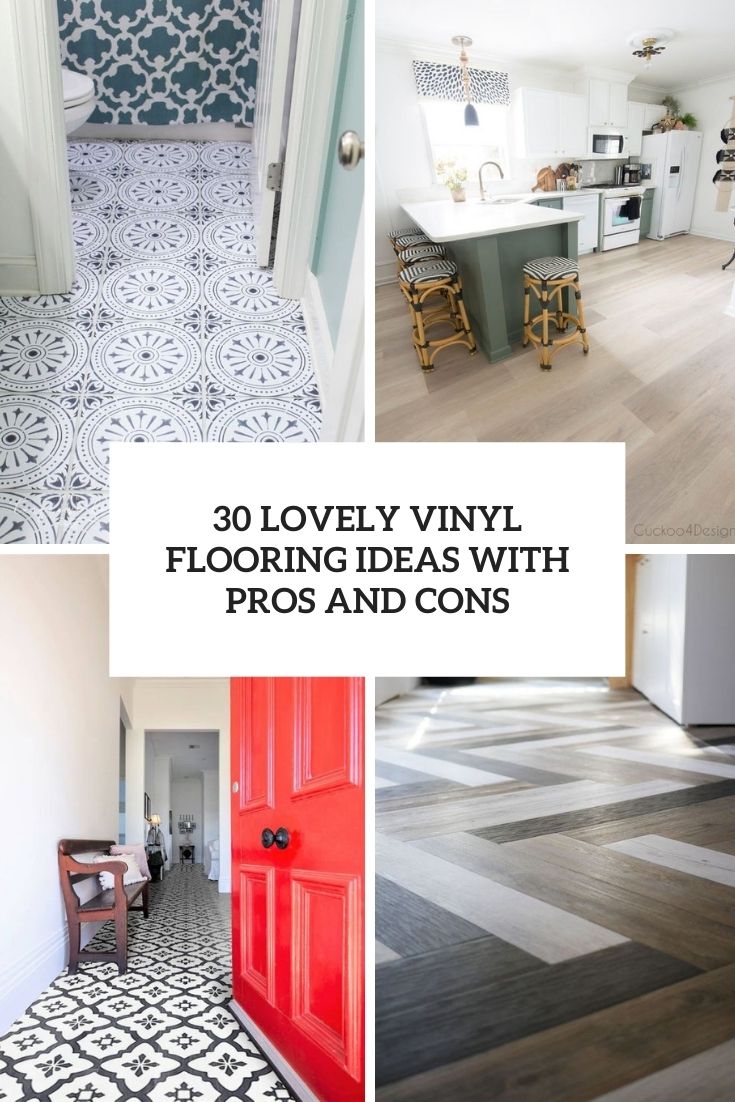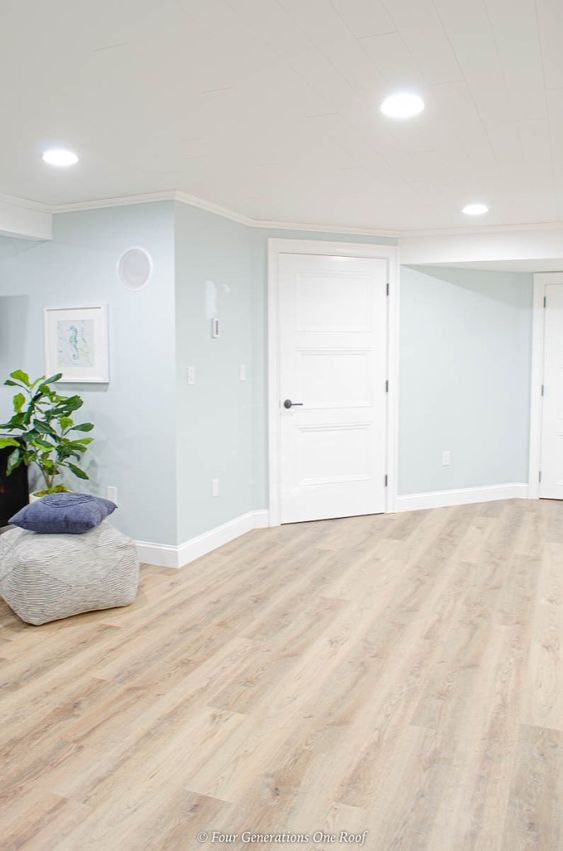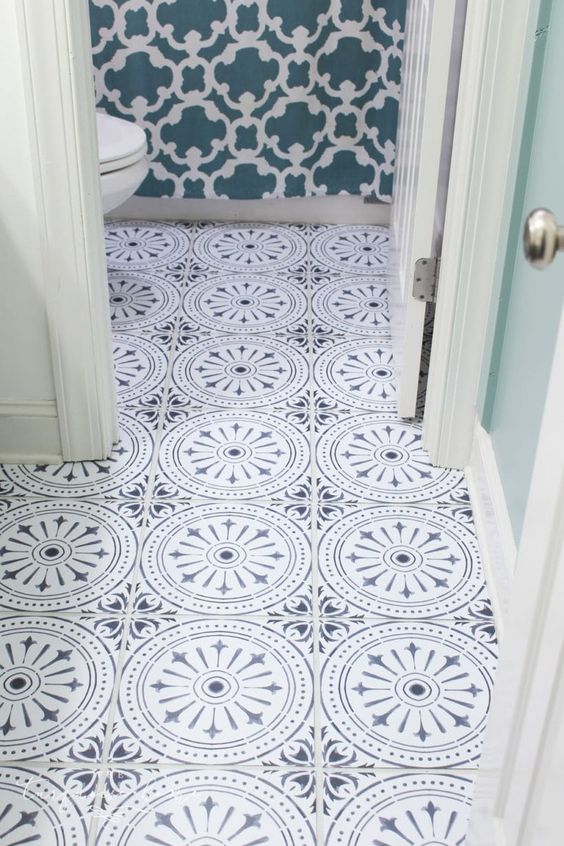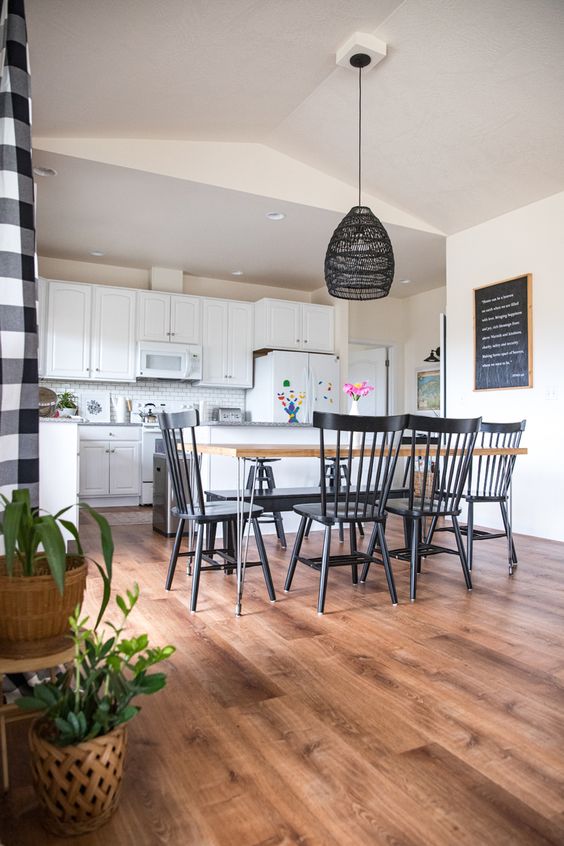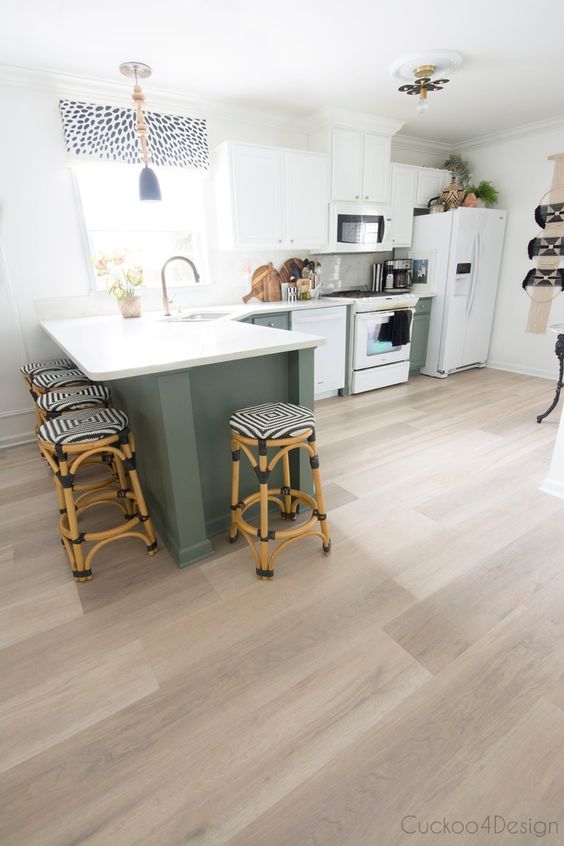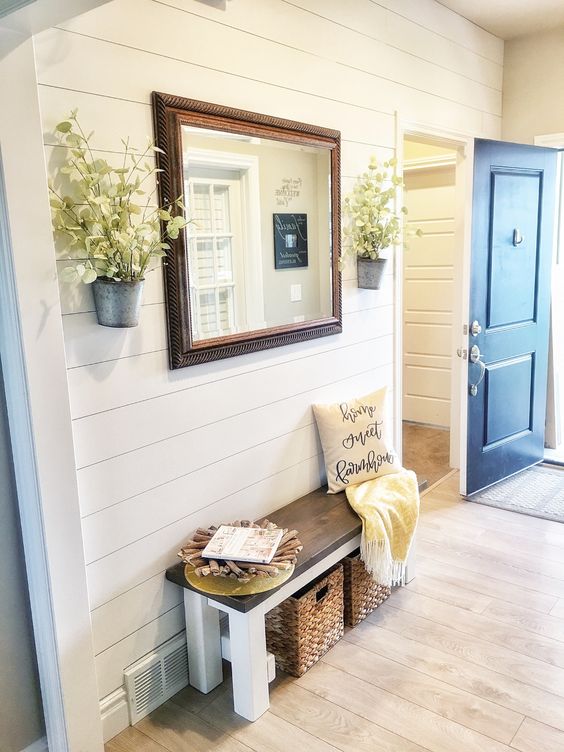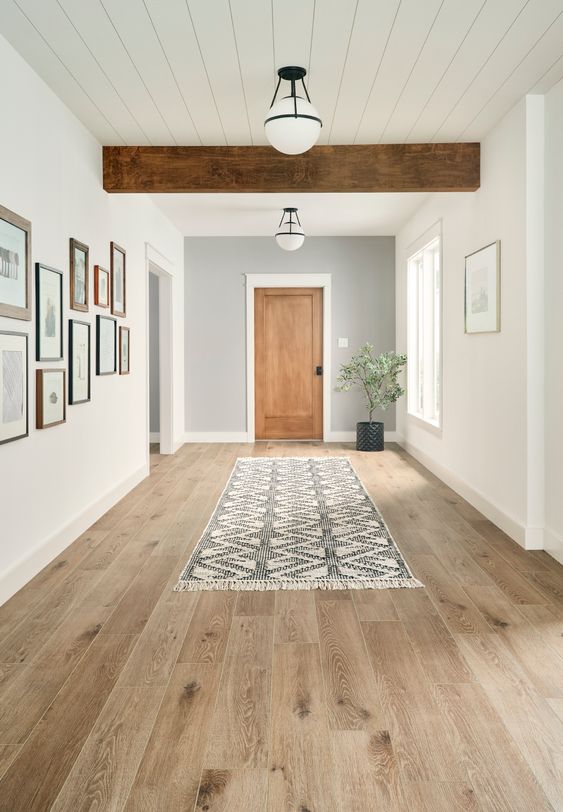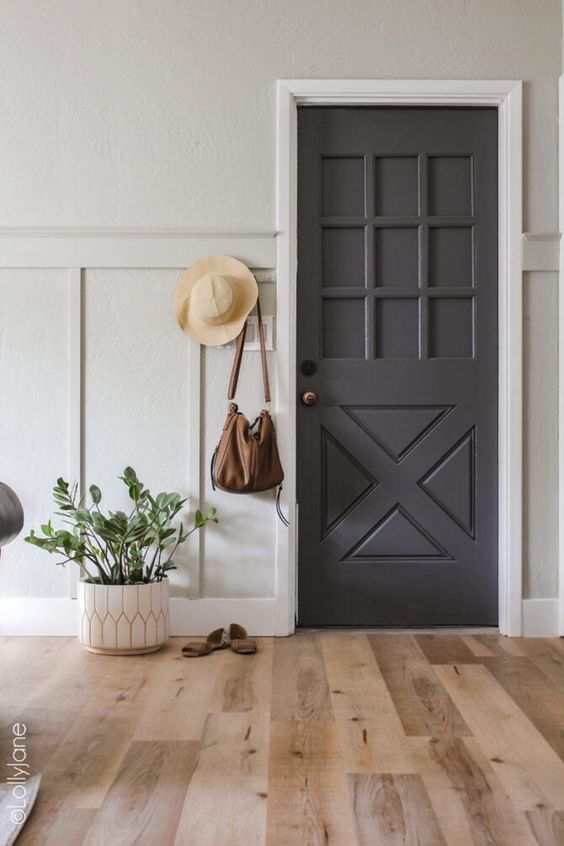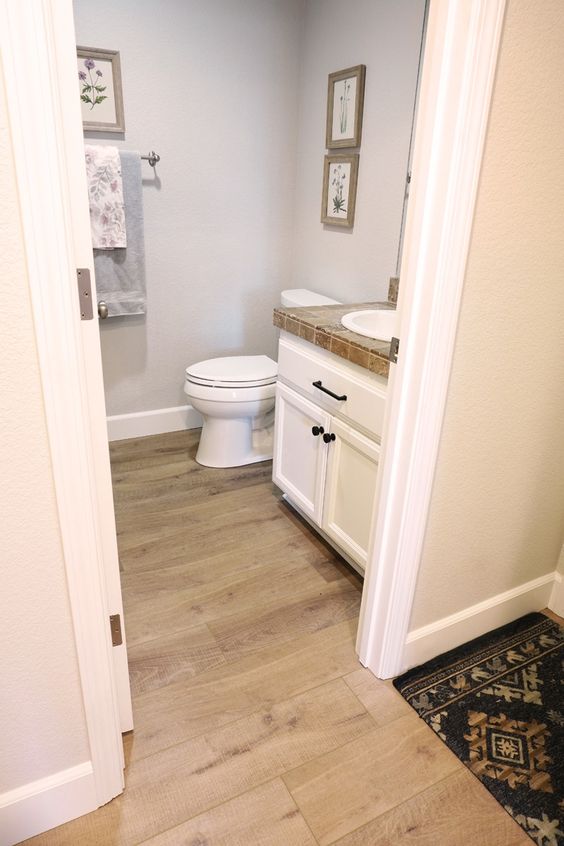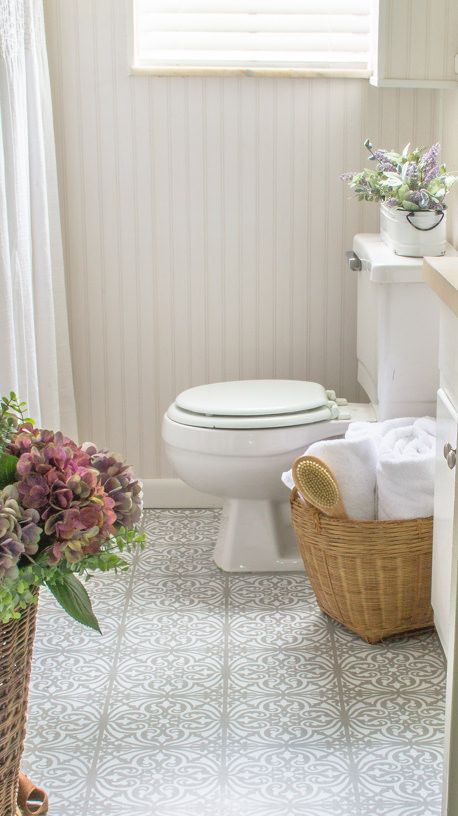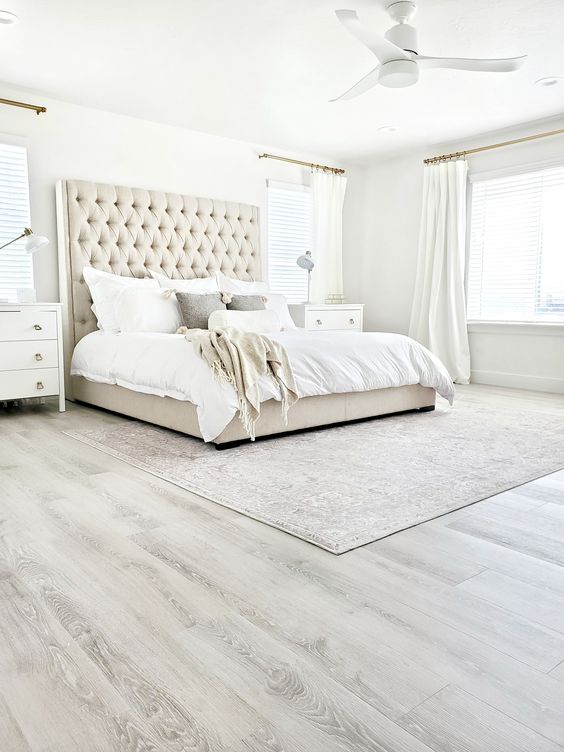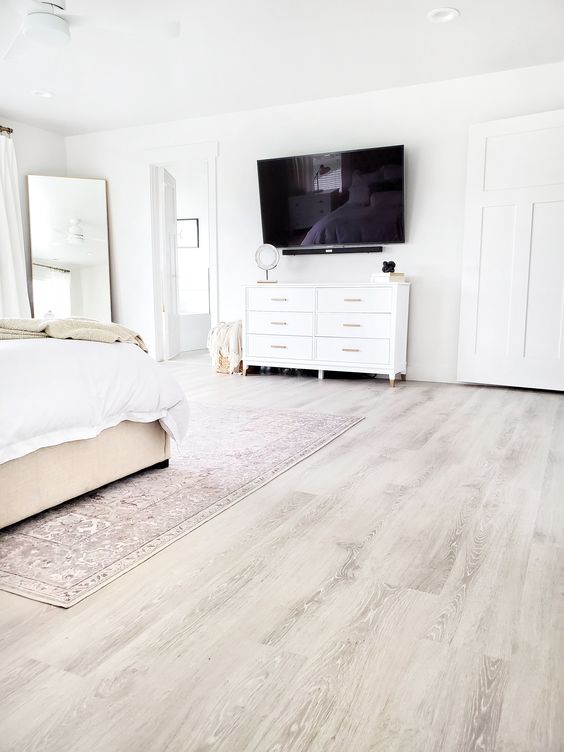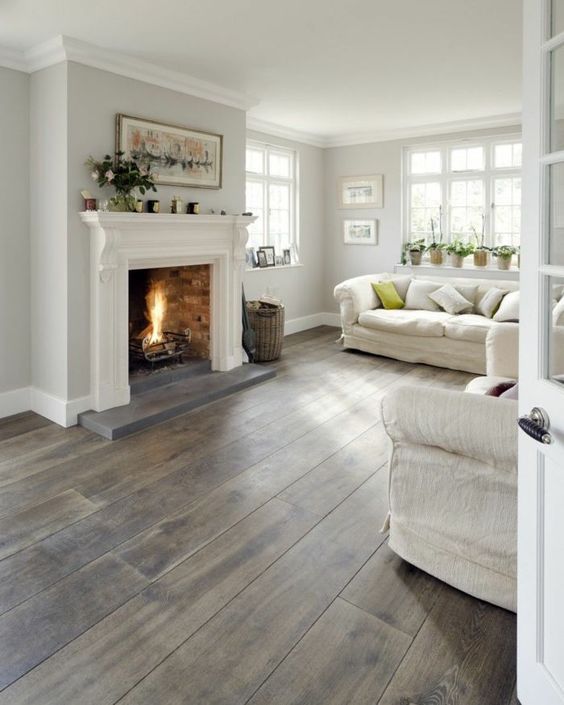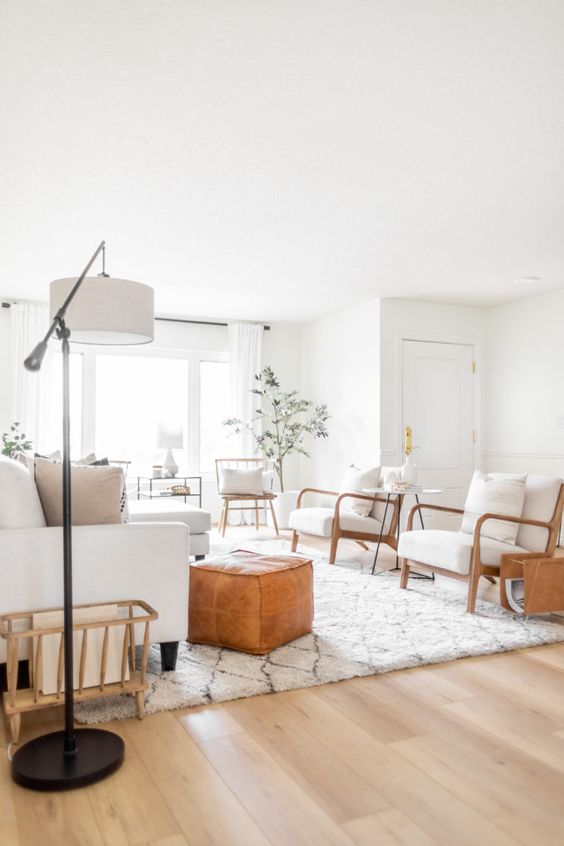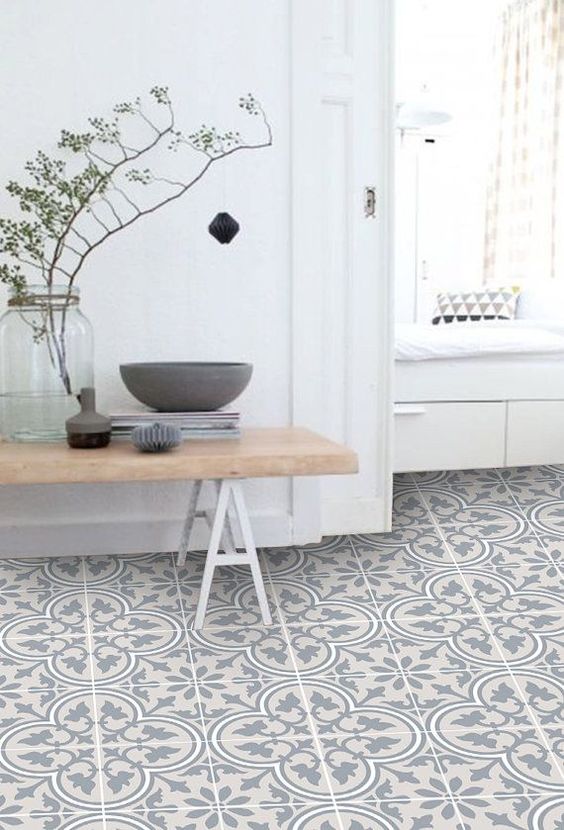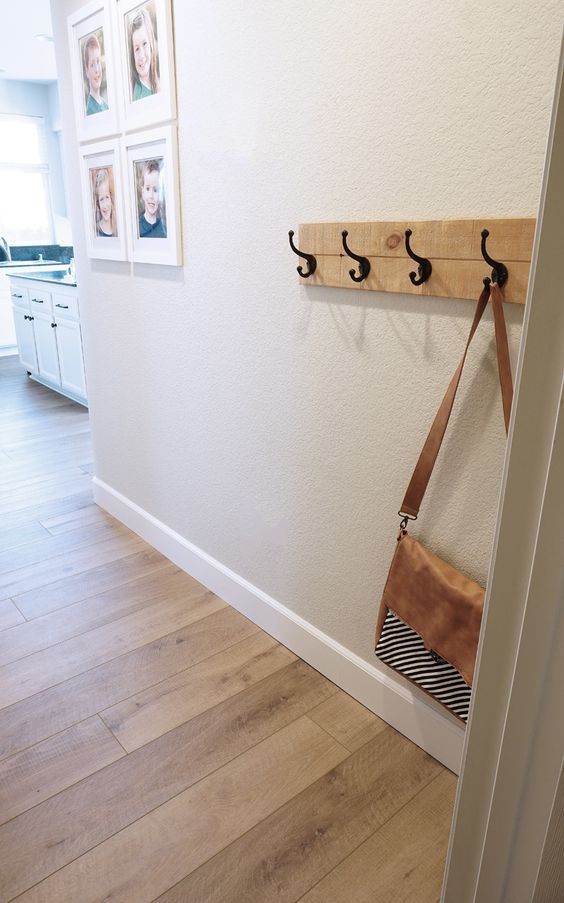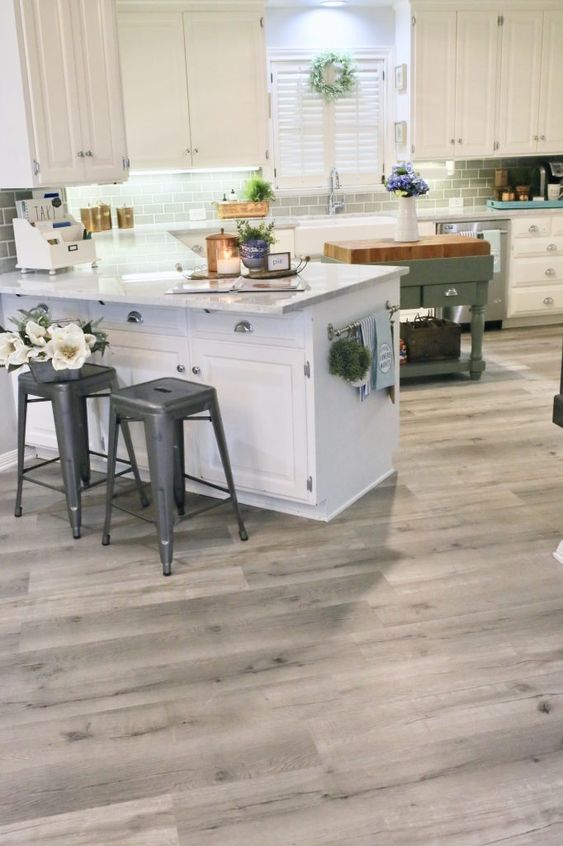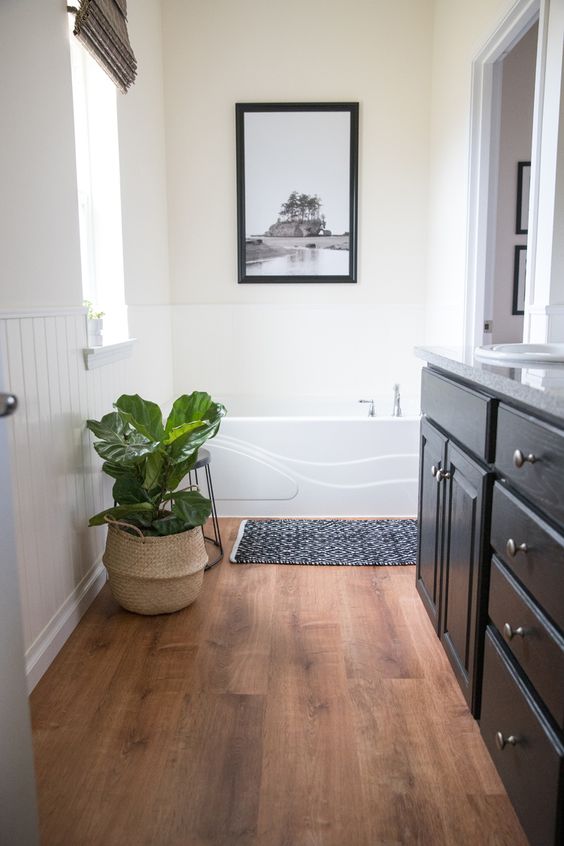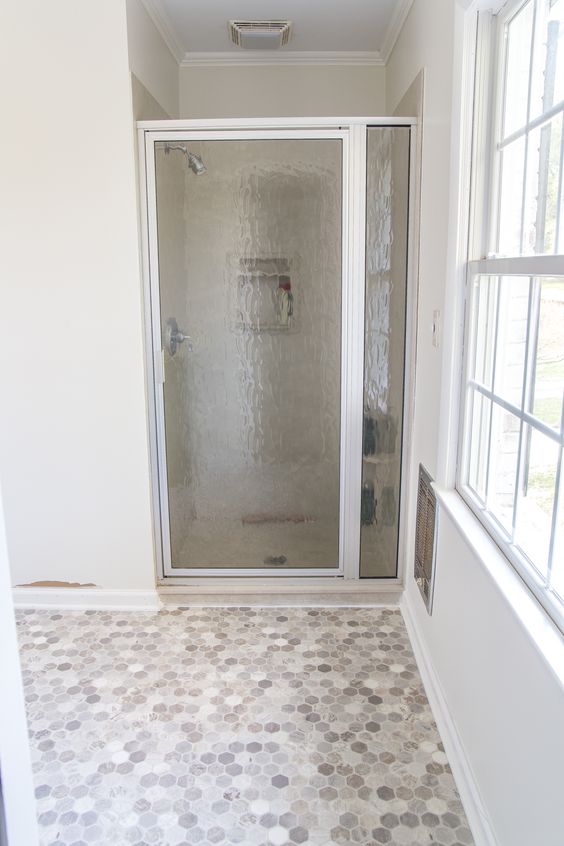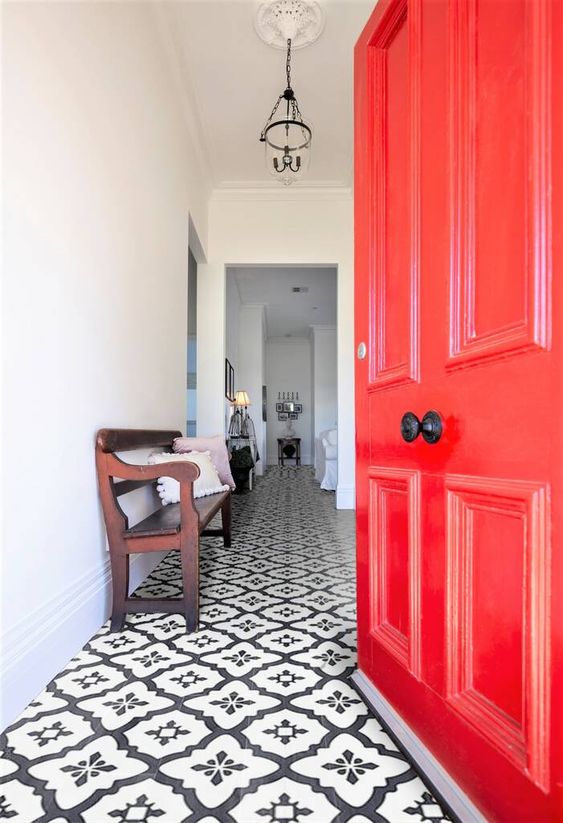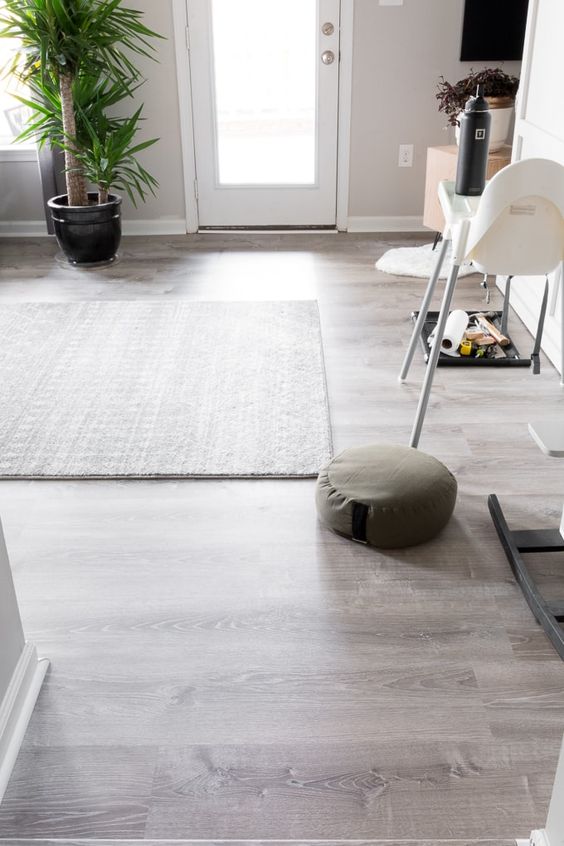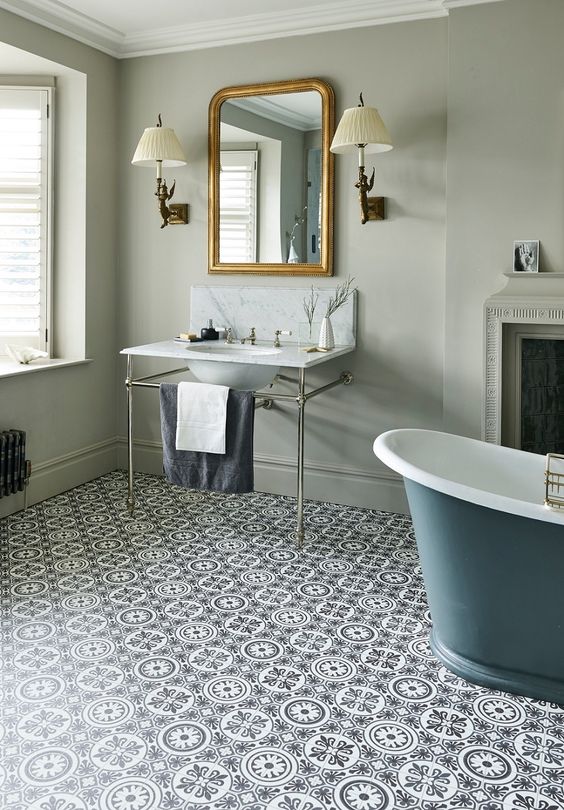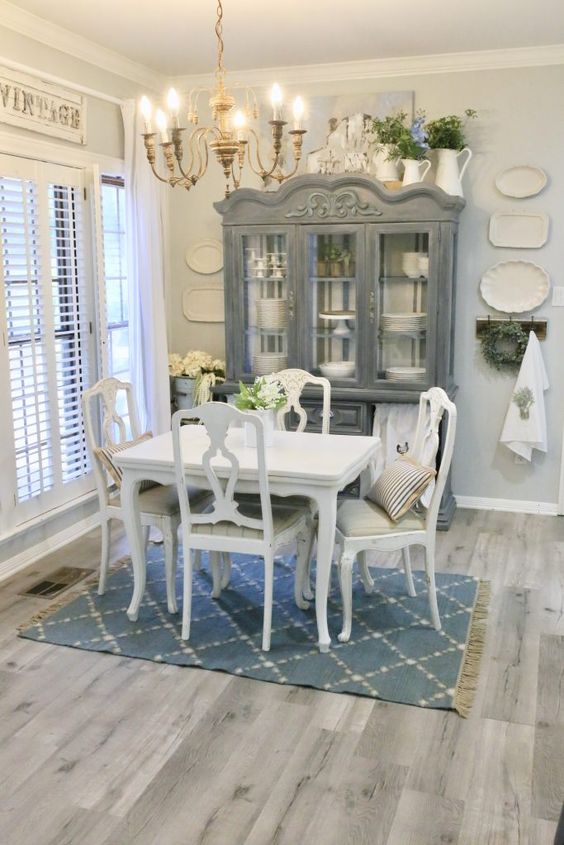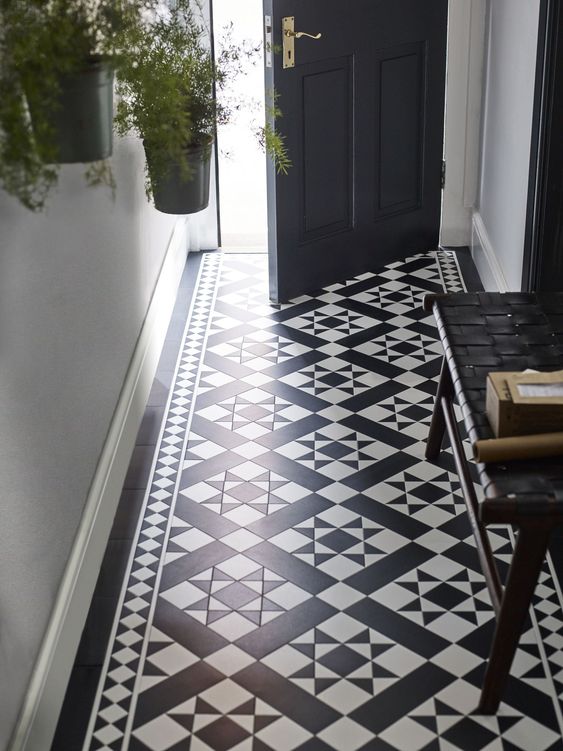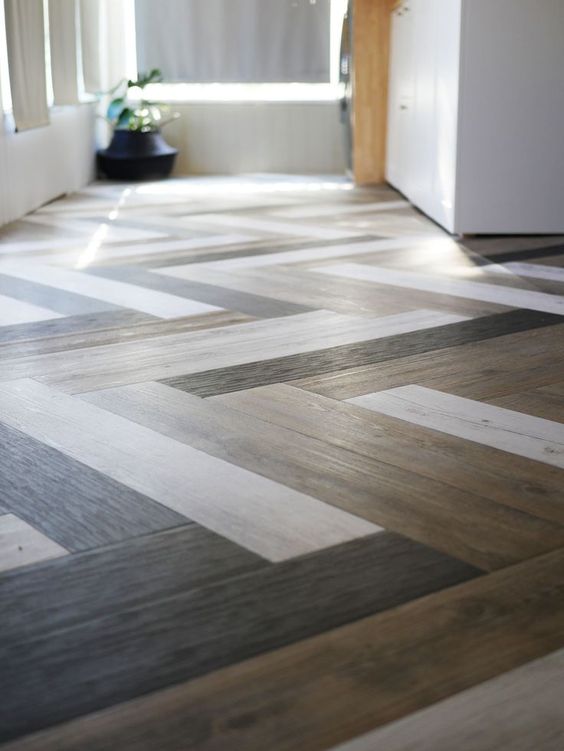Vinyl is the most popular form of resilient flooring because it’s low-maintenance, water-resistant, cost-effective, and long-lasting. It also has the perfect balance of firmness and “give,” meaning it springs a bit when you walk on it for a comfortable feel underfoot. And thanks to recent technological advances, today’s vinyl comes in a wide range of high-quality, beautiful finishes. Still, it has some disadvantages, too, so I’m offering you to take a look at both pros and cons to decide whether you need it or not.
Pros Of Vinyl Flooring
Probably the biggest advantage of vinyl sheet flooring is that it’s water resistant. It’s made with waterproof materials, such as PVC, which makes this flooring option perfect for water prone areas of the home like bathrooms, laundries, basements and others. Not all flooring options are as easy to clean as vinyl sheet flooring. You can clean it by sweeping off dirt and grit and by mopping it afterwards. Do just this and you’ll have clean floors—doesn’t get much simpler than that!
Printed vinyl tiles and sheets have a clear wear layer that acts as a surface barrier, protecting the floor from stains and spills. These materials are very easy to clean and maintain.
Vinyl sheet is softer underfoot than other hard-surface flooring options, making it much easier to stand on for long periods of time. It’s also warmer to the touch than harder surfaces like ceramic or stone tile. If comfort is a priority for you, look into vinyl sheet options that have an additional layer of cushioning.
Vinyl sheet flooring is a highly durable material that, if properly installed and maintained, can last upwards of ten to twenty years. This advantage makes it great for any room in the house, especially the high traffic areas.
Vinyl sheet flooring actually costs less than tile or plank vinyl with similar colors and patterns.
Vinyl sheet flooring is easy to install, making it a good DIY material. However, it does require the ability to take accurate measurements and make precise cuts to fit the space perfectly.
When most people think of vinyl sheet flooring, they think of old, retro style kitchens. But these days, the collections have improved color, clarity, textures and patterns all thanks to innovative technology. It’s what gives the flooring the realistic look and feel of hardwood, stone and even ceramic tile, but without the high cost. You can’t beat the winning combination of on-trend style and durability!
A basement space with vinyl flooring that imitates stained wood, light blue walls and some ottomans is welcoming.
A beautiful sage green kitchen with a vinyl floor, open shelves and stainless steel appliances is very chic and light.
A chic bathroom with blue and navy wallpaper walls, a navy and white printed vinyl floor and white appliances is amazing.
A chic farmhouse living room with a neutral planked floor of vinyl, black and grey printed furniture, refined carved wooden credenzas is chic.
A chic farmhouse space with white walls and laminate-looking vinyl, with white cabinets, a dining table and black chairs.
A coastal kitchen with white walls and a vinyl floor, white and green cabinetry, rattan stools and a printed curtain is chic.
A farmhouse bedroom with a bow window, a grey paneled wall, a pretty vinyl floor, a grey planked bed and cool bedding.
A farmhouse entryway with white planked walls, vinyl floors that imitate wood, a bench, an oversized mirror and potted blooms.
A farmhouse entryway with white walls, vinyl flooring that looks like laminate, a wooden beam on the ceiling, a rug and a gallery wall.
A farmhouse kitchen with white walls, a vinyl floor, grey shaker style cabinets and a black kitchen island, butcherblock countertops and a black lamp.
A lovely entryway with a grey door, a vinyl floor, a potted plant, a hat and some stuff looks chic and elegant.
Cons Of Vinyl Flooring
Even though the protective layer of the floor protects them from stains, this type of flooring is susceptible to discoloration, especially when it comes in contact with rubber. If you buy low-quality vinyl flooring, it can become yellow overtime. This discoloration can also take place because of direct sunlight. However, good quality vinyl floors are resistant to this.
When installing vinyl sheet flooring, it’s particularly important that you have a perfectly smooth, flat surface to work on. Because vinyl is relatively soft, even small grains trapped beneath the floor can wear down the material over time, causing lumps to appear in the surface.
If a sheet vinyl floor is severely damaged with a scratch, gouge, or a stain, your only option is to either replace the entire floor or remove the affected area and replace it with a patch. At best, this patch will have seams that will make the floor water-permeable, and the patch is likely to disrupt the unbroken pattern of the colors in the vinyl.
A mini bathroom with grey walls and a vinyl floor, white furniture and appliances and some artworks is a very cool and chic idea.
A modern farmhouse living room with creamy walls and a neutral vinyl floor, white and taupe furniture, a potted tree in a basket.
A neutral bathroom with white planked walls, a grey printed vinyl floor, white furniture and appliances and some blooms.
A neutral farmhouse bedroom with a grey vinyl floor, an upholstered bed with a statement headboard, white nightstands and some neutral textiles.
A neutral farmhouse bedroom with a grey vinyl floor, white walls, neutral furniture, a floor mirror and touches of brass.
A neutral farmhouse living room with a fireplace, neutral furniture, a basket and potted plants is a very welcoming space.
A neutral farmhouse living room with white walls and a very natural-looking vinyl floor, white furniture, leather ottomans and lovely lamps.
A pretty Scandinavian space with white walls and a printed vinyl floor, a bench and a windowsill seat with drawers is wow.
A rustic entryway with a vinyl floor that imitates stained wood, a matching door, a suitcase console table and pretty lamps.
A simple and small entryway with white textural walls, a vinyl floor, a hanger, a mini gallery wall is a cozy space.
A simple farmhouse kitchen with a vinyl floor, white cabinets, a grey subway tile backsplash, metal stools and a green kitchen island.
A small neutral bathroom with a shower space, a marble penny tile vinyl floor is a lovely and chic space to be.
A stylish entryway with a black and white vinyl floor, a red door, a vintage dark stained bench and a chic chandelier.
A stylish space with grey walls and a grey vinyl floor, simple white furniture, a potted plant and lovely textiles is cool.
A vintage bathroom with grey green walls, a printed vinyl floor, a non-working fireplace, a grey bathtub and a sink on a stand.
A vintage dining room with grey walls and a grey vinyl floor, a vintage white dining set, a grey buffet, lots of greenery and blooms in jugs.
An elegant mid-century modern entryway with a black and white vinyl floor, a black woven leather bench, potted greenery and a black door.
Such a lovely vinyl floor will add eye-catchiness with its colors and patterns and will make your space amazing.
